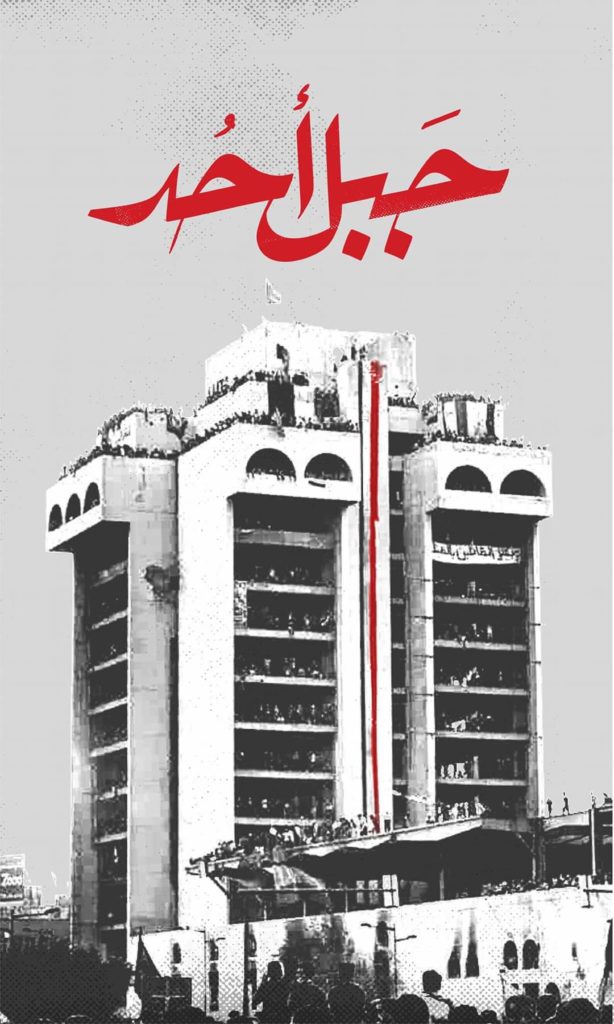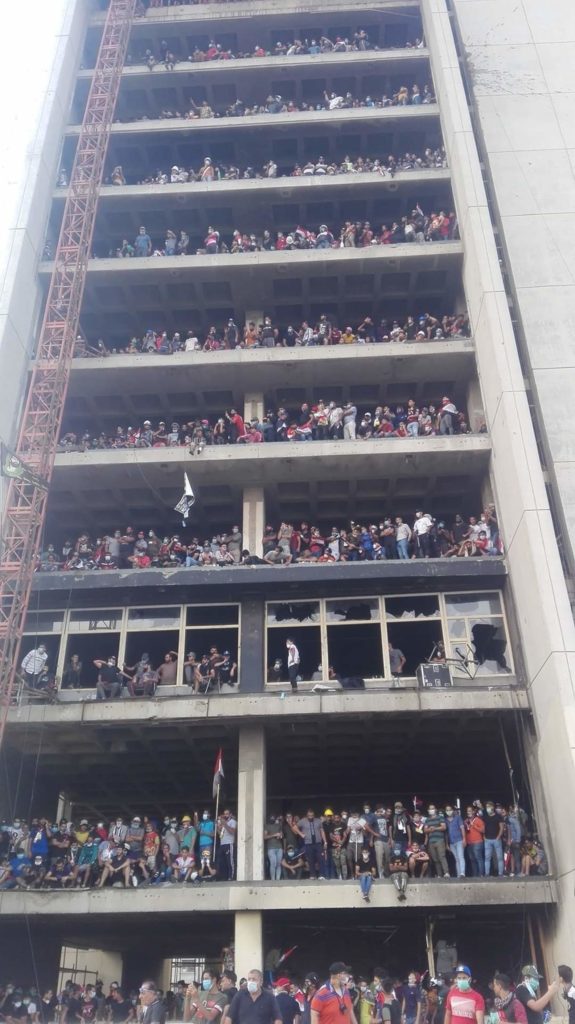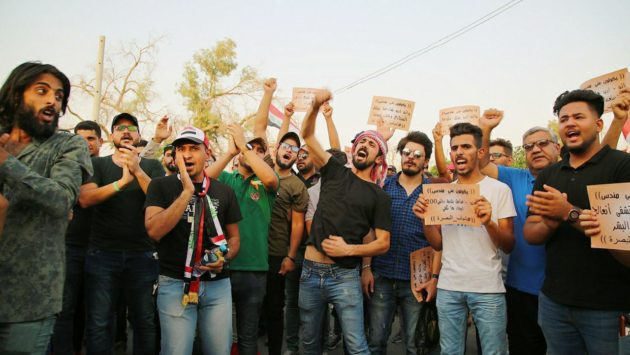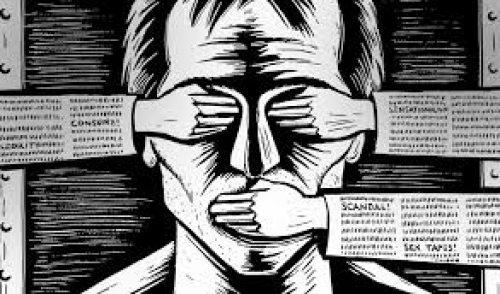“Uhud Mountain of Baghdad” A Strategic Building Remains Occupied by Protesters Despite Attempts by Security Forces to Evacuate It
Baghdad – Ahmed Al-Naimi
29 October 2019
For the fifth consecutive day, hundreds of Iraqi demonstrators continue to occupy the floors of the “Turkish Restaurant”, a building located between Tahrir Square and the Republic Bridge on the Tigris River in the center of Baghdad. This is a strategic location, right near the Green Zone which houses government buildings. Protestors remain inside despite repeated attempts by security forces to evacuate the building.

The 14-story building, abandoned since 2003 after being bombed by the US during its occupation of Iraq, had until recently retained its old name, “The Turkish Restaurant”, which was one of the most famous local restaurants located inside. Today however, it is being called by other names, such as “Uhud Mountain of al-Tahrir Square”, “Stalingrad Baghdad” and “Tuktuk Heroes Building” after demonstrators succeeded in preventing the security forces from storming it.

Security forces are trying to gain control of the building because it gives the occupiers an advantage over a large area of Tahrir Square, the center of the demonstrations in Baghdad. Protesters are keen to fend off security forces as a way to prevent them from using it as a position from which to restrain and limit the popular demonstrations, as happened in the protests of 1 October.
Iraqi security expert Salah al-Dabi told Al-Arabi Al-Jadeed that the Turkish Restaurant building is an important control center, especially since it was previously used by security and unidentified snipers to target protesters in Tahrir Square. It was also a place from which to monitor the waves of protesters coming from Saadoun Street, or from the intersection between al-Tayaran Square and al-Sheikh Omar Street. The protesters built on knowledge gained from previous demonstrations and took control over the building.
Protesters stressed that they would not allow security forces to take control of the building, because that would mean control of Tahrir Square, a sure precursor to breaking up the ongoing sit-in there. Activist Alaa Mohsen explained, “In previous demonstrations, the government suppressed us by snipers and gas bombs from this building, so we took control of it this time, and we will not allow them to return to it. We have given a number of martyrs and hundreds of wounded protesters due to tear gas and bullets fired by government forces stationed on the Republic Bridge, who are now targeting the building continuously. We are now more careful not to be near the windows.”
Activists on social media circulated videos that showed several attempts by security forces to take control of the building using troops stationed behind concrete barriers on the Republic Bridge leading to the Green Zone. They used fire bullets and gas bombs, while snipers continue to be stationed on nearby buildings. So far all attempts have failed and protestors continue to hold the building.
Protesters have formed several defensive lines to prevent troops from advancing: the first line maneuvers and occupies anti-riot forces on the bridge, the second transports the wounded, and the Turkish Restaurant building is the most important and last line of protection as it protects the backs of protesters in Tahrir Square.
The building dates back to the late 1970s and its construction was carried out by an Indian company. It opened officially in 1983, and the first floors consisted of commercial offices, corporate headquarters and the Turkish tourist restaurant, which gave the building its nickname. After 1991, it was abandoned by most foreign companies following the imposition of sanctions on Iraq, and in 2003, it was bombed by US aircraft after Iraqi resistance fighters barricaded themselves inside.
The protester, Ali Odeh, reported from inside the building to the Al-Arabi Al-Jadeed, “In the past,” he said, “the Iraqi resistance fighters fortified in this building, and today we are fortified inside it to resist corruption, quotas, and sectarianism.”




